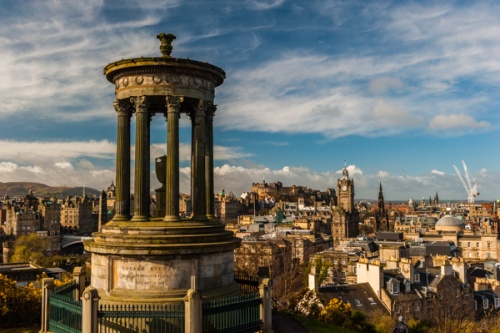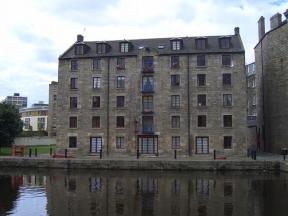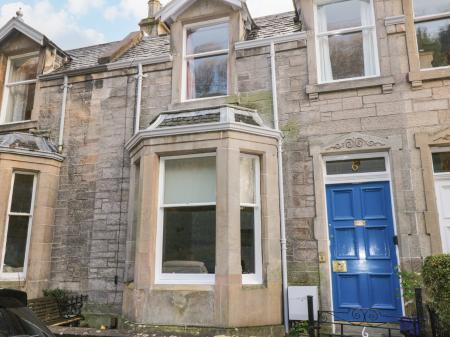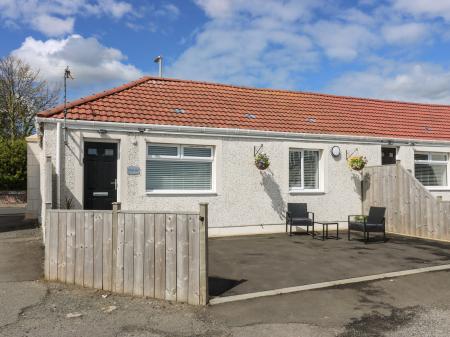
The major structures are clustered quite close to each other on the summit of the hill, making it quite easy to visit them together
Dugald Stewart Memorial
Perhaps the most recognisable of the Calton Hill structures, this small, almost delicate structure was designed by William Playfair to commemorate Stewart, a Professor of Moral Philosophy at Edinburgh University. Playfair designed the monument as an exact replica of the Lysicrates on the Acropolis in Athens. Stewart himself is buried at Canongate Kirk on the Royal Mile, within sight of the monument.

Scottish National Monument
This neoclassical monument was designed by William Playfair to emulate the Parthenon and commemorated Scottish soldiers killed in the Napoleonic Wars. Construction began in 1826 but halted when money ran out in 1829. The unfinished monument was derided for many years and dubbed 'Scotland's Disgrace', and 'Edinburgh's shame', but the partially complete structure has gradually become a source of pride and is now one of the most iconic of Edinburgh sites.


Nelson Monument
Erected in 1807 to mark Admiral Nelson's triumph at the Battle of Trafalgar 2 years earlier, the Nelson Monument intentional looks like an upturned naval telescope. Inside the monument are 143 steps, leading to a viewing platform near the top. Not surprisingly, the Monument promotes itself as offering the Best Views in Edinburgh, and they're right, for you can see everything for miles in all directions. There is a small charge for entry. At the top of the monument is a time-ball, synchronised with the one o’ clock gun at Edinburgh Castle. It falls at exactly one o'clock every day and is still used by mariners at Leith Harbour to set their chronometers.


Playfair Monument
On one corner of the walled enclosure surrounding the Old Observatory stands this small neoclassical monument, designed by architect William Playfair in honour of his uncle, a prominent mathematician. The monument was finished in 1826 and is the smallest of the monuments on Calton Hill.

Old Observatory House
One of the oldest structures on Calton Hill, the House was erected in 1792 by New Town architect James Craig, who once lived in the house. Craig intended the building as a family home, but it began being used as an astronomical observatory in the early 19th century. Its role as an observatory ended in 1818 when William Playfair designed a new City Observatory a short distance away. The 'new' Old Observatory is still used as a place to view the night sky and offers regular astronomical events and sky viewing evenings.

The Portuguese Cannon
In the shadow of the Nelson Monument is an ancient cannon, cast in the early 15th century. It bears the royal arms of Spain on the barrel, but sometime prior to 1785 it was used by the Portuguese colonies in southeast Asia. It was then either captured or acquired by trade by the ruler of Arakan, a small Burmese state. It was captured by the British during their 1885 invasion of Burma and was presented to Edinburgh the following year. The cannon is one of 6 which once stood atop Calton Hill, but in 1940 the others were melted down for the WWII war effort.

Visiting
Access to Calton Hill is very easy. There is a stair at Regent's Road on the south slope of the hill, and from Royal Terrace on the north. It is few minutes walk from the east end of Prince's Street. A path leads around the summit of the hill, and links the major sites.







